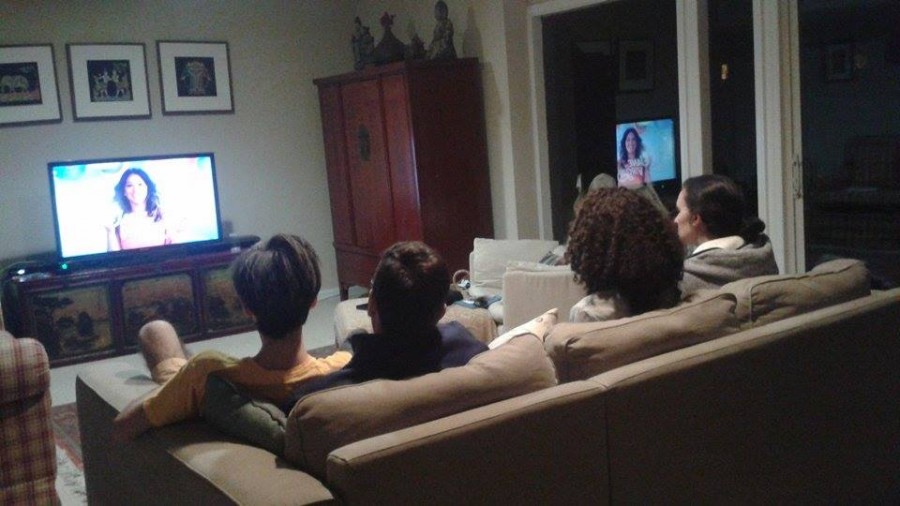‘Jane the Virgin’ offers viewers relatable characters
The Cardinale family kicks back and bonds over Jane the Virgin every Monday.
April 28, 2015
Every Monday our family sits down to watch Jane the Virgin, a popular new comedy show on the CW based on a telenovela our parents watched when it ran in Venezuela.
Jane the Virgin is the story of Jane, a virgin who gets pregnant when she is accidentally artificially inseminated. After deliberation, she decides to keep the baby as it was the father’s last chance to have a child. The father of the baby later becomes one of Jane’s love interests.
This show incorporates many aspects of Venezuelan culture, successfully representing us, as Venezuelans, along with many other unique characters and their backgrounds.
For us, it is amazing to watch a show that represents our Venezuelan culture. Any time the show mentions something such as the popular Venezuelan foods, arepas, a type of flatbread typically made with maize dough, and pan dulce, translated directly as “sweet bread,” it reminds us of home. However, even without cultural ties to the show, viewers can still gain a new perspective on an unfamiliar culture.
Though Jane the Virgin is different from the original telenovela, Juana La Virgen, in a few minor ways, it still represents many of the core ideas present in the original show, such as family values and religion.
Representation of a variety of people on the show also allows everyone to see themselves within characters and people on television or other forms of media. Seeing yourself within characters you love is humanizing.
According to sophomore Gloria Oh, exposing the public to accurate depictions of different cultures provides people with characters they can relate to.
According to a Dec. 30 Huffington Post article, 2014’s increase in diversity on television allowed more people to see “characters, actors and lifestyles that more closely reflected themselves.”
Jane the Virgin is an example of how TV has come a long way in the field of representation.
“I have noticed especially in older shows that [racial] roles are very stereotypical,” Oh said. “I think this kind of sends a negative underlying message and that contributes to the way our society thinks today.”
According to the Huffington Post article, Black-ish, Jane the Virgin, Orange is the New Black, and How to Get Away with Murder are just a few shows that are succeeding in the area of representation for different races and sexual orientations, among others.
However, equal representation in the media still has a long way to go. Inequality is still very present and can have negative effects on individuals who feel underrepresented.
According to Oh, negative representation affects her personally as females and Asians are often stereotyped and she cannot see herself in the characters.
According to an February 2015 NPR article, women make up slightly more than half of the U.S. population, but directed only 6 percent of theatrical films in 2013. Ethnic minorities, who make up nearly 40 percent of the U.S. population, received only 17 percent of the lead roles in theatrical films.
More equal representation in the media helps incorporate all people into the media we consume every day.
By seeing our culture accurately represented on Jane the Virgin, we are allowed to feel like we have a significance in the world. We, Venezuelans, are more than how we are perceived; we are individuals with our own stories and Jane the Virgin portrays this.


